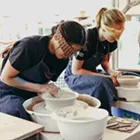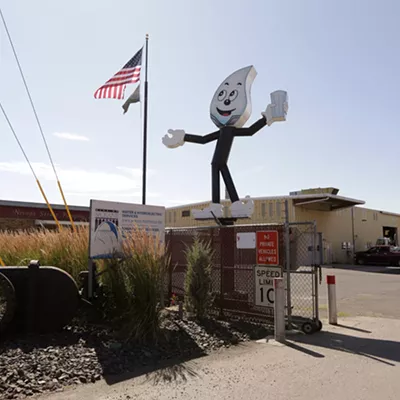
A giant billboard of a young, injured baseball player tells the story of youth sports in America today. “Sometimes,” the sign reads from above New York City’s Times Square, “the game they love doesn’t love them back.”
That message is the handiwork of the national STOP (Sports Trauma and Overuse Prevention) campaign, an unprecedented alliance of orthopedic surgeons, pediatric specialists, sports medicine experts, physical therapists, trainers and professional athletes. They’re issuing a wake-up call to America’s parents, coaches and medical professionals. Sports injuries, STOP says, are an epidemic — a national crisis.
Nearly a quarter of young athletes in football, baseball and softball get injured. Over the past decade, ACL tears have quadrupled; serious shoulder and elbow injuries for young softball and baseball players have quintupled.
All in all, more than three million kids under the age of 18 suffer a sports-related injury each year; about half of those injuries come from overuse.
For Samantha Keogh, it all began with a single dive on the volleyball court. It wasn’t in front of a cheering crowd — it was just one of a series of dives during practice, as part of a drill. That was when the 16-year-old Cusick girl felt something shift.
And then, as she raised her arm in a setting motion during a later drill, her arm got stuck, skewed at an odd angle. She’d dislocated her shoulder.
It didn’t take much to fix. “There was a really loud noise,” she says. “Yeah, it hurt.” Despite some soreness, at least her joint was back in place.
But it didn’t stay there. It dislocated again playing soccer. Then again, jumping on the trampoline, playing basketball, and when she slipped on the ice.
Eventually an MRI revealed she had torn her labrum, the fibrous rim of the shoulder socket. It would take a surgery — and a recovery of nearly six months — to repair it to where she could play without fear of another dislocation.
“I’m glad I had the surgery. Now I don’t have any problems,” she says. “But it does take a long time.”
For young athletes, sports are often a crucible of work, identity, community and parental obsession. And while some injuries may just be bad luck — a fall, a high-impact collision, pulls, and snaps that just happen — that can’t explain the alarming increases.
An injury can suddenly, painfully remove any young athlete from the sport they love. Many athletes never return play again — and, even with surgery, many will never reach their full potential.
YOUNG AND BROKEN
Orthopedic surgeon William Levine, the chairman of STOP’s sports injuries committee, says he had two 10-year-olds in his operating room for sports-related shoulder injuries last week.
There was a time, he says, when he’d never see even a 12-year-old with a shoulder injury. That’s changed.
“You’re taking a generation of young athletes and potentially damaging them to a point that surgery may be necessary,” Levine says.
Not only is he seeing more injuries, he says, but the patients are getting younger and younger. And as he performs surgery, he does so knowing that it may forever harm their athletic potential.
“There’s some folklore that parents and some kids think that if they do have surgery it will make them stronger than they [were] before,” Levine says.
Because children’s ligaments haven’t yet fully developed and their bones are still growing, what might be a minor injury in an adult can have more lasting effects in a child. In addition, adults can confidently opt for a surgical repair, while many times surgery for kids can be more difficult.
“You’re dealing with growth plates, and immature tissue,” says Michael Dieter, a physician’s assistant at Northwest Orthopedic Specialists. Growth plates are at the ends of the bones in a growing body — by remaining slightly separated from the main shaft of bone, they allow room for the bone to grow. Once growth is complete, the growth plate fuses onto the bone shaft. In a child, damage to the growth plate on the femur, or thigh bone, might result in one leg forever shorter than the other.
Dieter says he regularly sees children just playing sports too early — starting intense athletic training at age 5, doing weight-lifting exercises that their bodies just aren’t ready for.
And some types of training just aren’t suited to children: The intense bursts of jumping that take place in plyometrics, for example, have been known to damage growth plates in the legs. In fact, the American Academy of Pediatrics recommends that no explosive or Olympic-style lifts occur until after a child’s adolescent growth spurt is completed.
But even injuries that kids used to be immune to — like ACL tears — are now occurring in children as young as 9.
What’s behind the increase in injuries? Maybe more sedentary childhoods are leaving kids prone to injury, or maybe the increasing competitiveness of youth sports is simply pushing kids too hard, too early.
ONE SPORT, ONE MOTION, REPEAT
Three-sport stars used to flourish in the high-school habitat. Fall football turned to winter basketball turned to spring baseball turned to a summer of hikes and pickup games.
“Now the three-sport athlete is almost extinct,” says Herb Rotchford, director of the Greater Spokane League. “It breaks my heart. There’s this mindset now that ‘If I’m going to be the best on this particular sport, I have to concentrate on it.’ It happens early.”
A baseball player plays baseball during the baseball season and club baseball during all other seasons. The days when the young body, the growing skeleton, had rest and variety are fading.
“With all-star teams, showcases and travel teams and school teams, these kids are having a 365-day, 24/7 experience,” Levine says. “Even Derek Jeter and Alex Rodriguez have an off-season. These kids don’t.”
Here’s the danger: A single sport has a single set of motions — the quarterback pass, the windup, the pitch, the bump, set and spike. That focus on a repetitive motion can lead to overuse injuries.
So while a sport like, say, cross country doesn’t have bashed helmets, cleat-spiked shins or fastball-bruised foreheads, it has repetition. It has the day-in, day-out stress of the pounding of pavement. Fifty, 60, 70 miles a week.
“I’m seeing more and more stress fractures in feet and tibias and the long bones of legs,” says Dieter. “It’s chronic overuse. Kids are running year-round. When I first started, we didn’t see any stress fractures.”
Dieter says there’s no rest between seasons, no time for kids’ bodies to just grow and be normal. Other common overuse injuries include tennis elbow, swimmer’s shoulder and Achilles tendinitis. For virtually all overuse injuries, at least one part of the cure involves rest — something that is not always easy for an athlete to accept.
THE FUNCTION OF FORM
Even motions that are performed repetitively might not lead to injury if the player is using the correct technique. Specializing in one sport makes good form more important than ever, and more young athletes are seeking specialty training — stuff that used to be reserved for the pros — to give them a chance to play the sports they love, safely.
The Warehouse, an indoor sports complex across from Gonzaga University, fills with the sound of bat cracks and the smell of gym sweat as little-leaguers huddle around one-time college athletes.
Most who saw Niko Jackson — a 15-year-old freshman pitcher — play catch with his dad at the Warehouse would have seen simply a bonding moment between father, once a baseball player himself, and son.
But Brandon Blank, a former baseball player at Gonzaga, immediately saw something else. Blank loads up a slow-motion video of Jackson on his laptop at his desk in one corner. There. See that? Jackson’s leading his throw with his chest, instead of his legs.
It’s a mistake that Blank says is incredibly common for young athletes. The proper way to throw a baseball starts with the energy at the legs, cascades up the hips and the chest, and only then, at the end, the arm. Do it wrong, and the arm and shoulder take on the full burden of blasting out a 90-milean- hour fastball.
“It’s like sending a small dog into a big fight,” Blank says. It can work for while, but eventually athletes pay a price.
Jackson’s form had lapsed back into bad habits. His arm began to get sore. Blank — who remembers making the same mistakes and experiencing the same pains when playing at Gonzaga — has been tutoring Jackson to fix his sequence. When he gets it right, Jackson says, “it feels like I’m throwing with my whole body, with one fluid motion. … My motion is so much more natural.”
Jackson’s now a starting pitcher on the Central Valley High School team. But Blank warns that if he doesn’t keep working on the biomechanics of his pitch, the arm pain will return.
Every sport has techniques that, if performed wrong, lead to injuries. New attention on landing techniques after jumping may be able to help reduce the number of ACL tears in young female basketball players, who are disproportionately prone to the season-ending injury. Getting the right grip size can help players avoid tennis elbow, and paying close attention to body alignment may help young dancers stay healthy.
COUCH POTATO KIDS
While there’s no doubt that youth sports have changed in the past few decades, some are questioning whether kids — growing up with videogames galore — might not have changed as well.
Pat Tyson, cross country coach at Mead High School until 2005, took his team to state 18 years in a row. For the most part, his teams dodged the injuries that dogged other teams. He credits erring on the side of underwork rather than overwork.
But Tyson saw injuries increase in the last fi ve years coaching at Mead. He attributes it not to overtraining, but the opposite: Many of today’s high school athletes have grown up sedentary.
“All your ligaments tendons, muscles — I think they’re not calloused for the kind of intensity that occurs,” Tyson says.
It’s a problem the medical community is taking seriously.
“We don’t know whether children are bringing, perhaps, weaker bodies. They’re very sedentary.” says Lyle Micheli, director of the division of sports medicine at Children’s Hospital Boston. “They may be bringing bodies that are at greater risk of injury to these sports.”
WINNING PROPOSITION
Addressing all the issues leading to the rapid increase in kids’ sports injuries is going to require what a coach might call “an attitude adjustment.”
“One of the things that concerns me as a parent and also as a team physician,” says Levine of the STOP campaign, “is just the significant percentage of coaches and parents who don’t quite understand that not paying attention to this stuff is the No. 1 contributor to the problem.”
For coaches, that means learning about safe techniques, Levine says. For example, in spite of the instinct to push kids hard and toughen them up, coaches need to realize the adage “no pain, no gain” does not apply to children.
“If a child has pain when they run, they need to rest,” Levine says. “You don’t just keep playing through the pain.”
Levine adds that better communication can help. The coach needs to ask, “Are you hurting?” and respect the player’s answer.
Information is power, and efforts are already underway locally to improve training for coaches.
“The YMCA provides coaches guides that focus on proper coaching techniques and practice structures,” says Pat Estes, the association’s youth sports director in Spokane. “We also provide options for coaches to attend coaching clinics where they can fine-tune their coaching skills as well as learn proper coaching techniques that will reduce the risk of injury.”
Lots of sport-specific guidelines for coaches in all sports are available at the STOP website. And the group has prepared a “curriculum toolkit” for coaches that reviews training techniques, such as dynamic stretching and warm-ups, as well as more specific information related to preventing overuse injury.
Parents, who are ever-vigilant about making kids get to practice on time with the proper equipment, will have to add injury patrol to their list of duties. By being alert to the early signs of injury and advocating for their children, they can help avoid more serious injury.
That role may mean taking a step back from ardent dreams of a young athlete’s potential star power — something that can be harder on parents than it may be on their child.
“It’s always difficult, telling a parent their kid needs to rest,” says Dieter, from Northwest Orthopedic Specialists. “It’s not uncommon where the kid’s body language would be ‘Thank you’ and the parent’s is ‘That’s not okay.’”
It’s not exactly news that parents can get a little out of control. Most of the 70 percent of kids who quit sports by the age of 13 cite the influence of parents and coaches.
“When I played Pony league,” says Jackson, the young pitcher, “we had a few dads that were intense. They put a lot of pressure on winning.”
What is news is that kids under stress or pressure — of any kind — are more prone to injury.
Perhaps the best way to keep sports fun and safe for kids is to make sure that athletic endeavors are only one component of a balanced family life. Most kids aren’t even going to play on high school teams, and fewer will get a college scholarship. Only a miniscule percent will go pro.
Yet, “somehow many of us are insecure and doubt that we ourselves have what it takes to raise our kids well. So we entrust them to ‘experts,’ coaches and tutors,” writes Dr. Alvin Rosenfeld, author of The Over-Scheduled Child — Avoiding the Hyper-Parenting Trap. “What our children really need is us. Just quiet, unstructured, unpressured time with us.”
INJURY ALERT
Most children will let you know when they're hurt, but for those kids who try to tough it out, parents and caregivers should watch for signs of injury, such as:
avoiding putting weight on a certain body part (like an ankle or wrist) or favoring one side of the body over the other or limping
appearing to be in pain when using a particular body part
inability to sleep
headaches during or after activity
appearing to experience stiffness in the joints or muscles
difficulty sitting and/or climbing stairs
inability to feel the fingers or toes
irritated skin and/or blisters
If your child experiences sharp, stabbing pain, he/she should stop the activity immediately.
Playing through pain may make the injury worse and probably cut your child’s season short.
If you have any concerns that your child might be injured, speak with a physician or certified athletic trainer immediately. The sooner an injury is diagnosed, the more effectively it can be treated, and the sooner an athlete can return to playing.
SOURCE: STOP Sports Injuries campaign
BY THE NUMBERS
3.5 MILLION Kids under 14 who receive medical treatment for a sports injury each year in the United States, according to Safe Kids USA. Of those injuries, 62 percent happen during practice, not during games.
$275 Cost to play a sport at Lake Washington High School, outside Seattle. According to a Seattle Times article in January, due to state and local budget cuts, that figure is up from $75 — leading to a 13 percent drop in turnout. So far, a few Inland Northwest public schools have adopted “pay-to-play” fees, but not Spokane Public Schools.
90 Percentage of kids ages 5-14 nationwide who say they would prefer to be on a losing team if they could play rather than warming the bench on a winning team, according to a Michigan State University study.
73 Percentage of corporate executives who say they played sports as a kid, according to USA Today.
71 Percentage of parents who say it’s very important that coaches be knowledgeable and trained in sports injury prevention and sports safety, according to a 2011 Safe Kids USA study. Yet just 29 percent said their own kids’ coaches have that knowledge.
49 Number of weeks per year that football coaches in Virginia can run “football-specific events.” In other words, save three weeks, high school football there and in states like Texas and Florida has become a year-round sport, according to ESPN.COM.
6.6 Percentage of high school baseball players who will go on to play in college, according to the NCAA. Baseball has the best odds for aspiring high school athletes, as compared to basketball (3.2 percent will make the NCAA) and football (6.1 percent). About one out of every 200 high school baseball players will be drafted by a Major League Baseball team, or 0.44 percent.
3 Factor by which female high school athletes are more likely to graduate than those who don’t participate in sports. They are also 80 percent less likely to get pregnant during high school and 92 percent less likely to use drugs, according to research from the Women’s Sports Foundation.



















